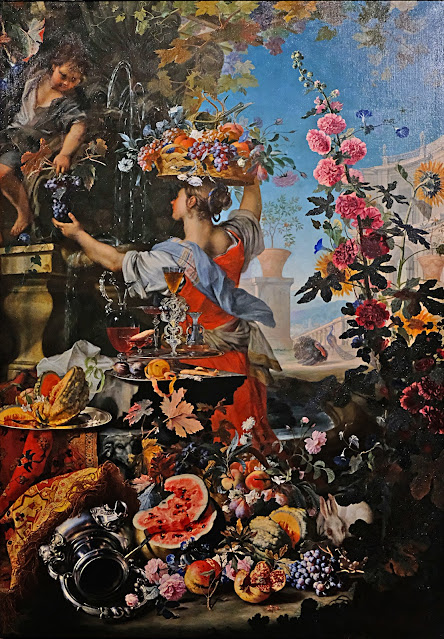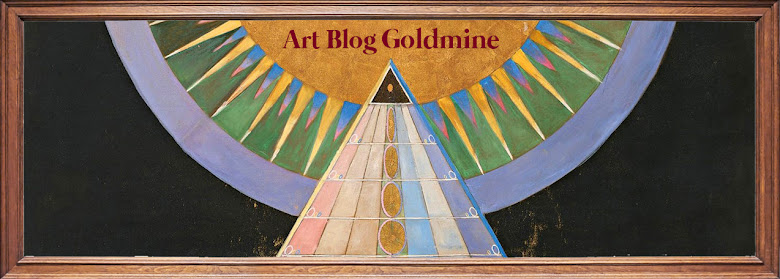Topics Covered in Part 1
- Background Information
- Renaissance paintings of Farnese Collection
Topics Covered in Part 2
- Baroque paintings of the Bourbon Collection
- Conclusion: Opinions and Lessons
Baroque Paintings of the Bourbon Collection
To understand the origin of the Bourbon Collection, knowing the history of Naples is a must. In the 17th Century, Naples was a bustling port city in Spain and was regarded as the second-largest metropolis in Europe. Since the establishment of the Kingdom of Naples in 1734, governing Spanish sovereign funded the building of grand churches and palaces, and patronized masterpieces by artists from the city and beyond. As a result, the whole city was adorned with magnificent artwork. However, after Napoleon rose to power, artistic treasures were removed by his administration in 1806. Later, after the Congress of Vienna restored Ancien Regime in 1815, King Ferdinand and his heirs acquired dispersed Neapolitan paintings. They categorized acquisitions as Bourbon Collection. Its name was derived from the palace that housed the restored throne.The paintings of the Bourbon Collection are categorized according to their subjects. When observing artwork, pay attention to literary references of depicted subjects, morals behind each story, and visual traits of paintings: chiaroscuro(dramatic contrast), realistic depiction, capturing narrative, theatrical gestures, sensual richness, strong emotions, and sumptuous color scheme.
Biblical Scenes
In hopes of encouraging piety from believers and divine protection from natural and man-made challenges, clergy from churches in Naples commissioned artists to paint monumental altarpieces that featured biblical scenes and patron saints of the city. |
| Artemisia Gentileschi, Judith and Her Maidservant Abra with the Head of Holofernes, 1645-1650, Oil on canvas, Bourbon Collection |
Link to in-depth analysis
Cain and Abel were sons of Adam and Eve. Cain worked in the field and Abel took care of flocks. Cain became jealous of Abel, as the Lord was more fond of Abel’s offering. Out of malicious intention of monopolizing the affection of the Lord, Cain killed his younger brother. After discovering his irreversible sin of Cain, the Lord told Cain that he would be no longer able to yield crops from any field.
 |
Lionello Spada, Cain and Abel, ca. 1612-1614, Oli on Canvas, Bourbon Collection |
The painting depicts the most abject moment of the story. Flushed with jealousy, Cain is raising a wooden bat menacingly to cause a lethal blow to his brother. The concept of painting is a reminder of the consequence of violating basic moral principles. The work of the sinner will be taken away, as his character is not eligible to work and contribute to his community.
Carracci and Caravaggio, Masters of Baroque Art, greatly influenced artists of the new generation in the 17th century. Firstly, the new generation of artists studied the composition of Caravaggio’s paintings. Compare Stomer’s version of the Supper at Emmaus with that of Caravaggio. Stomer’s version is a perfect example that demonstrates Caravaggio’s far-reaching influence. The close-knit composition of characters sitting around a candlelight is derived from Caravaggio’s painting of the same subject. Secondly, the new generation agreed that subject should be based on real-life observation. Instead of depicting idealized beauty, artists incorporated people, objects, and textures from daily lives into their paintings. Real-life observation by Stomer is evident in his portrayal of deeply lined faces, messy hair, and tattered clothing.
Classical Myth
Contrasting to paintings of biblical tales commissioned by clergy, paintings of secular and even profane subjects were on demand by self-initiated patrons. Wealthy and well-educated merchants, bankers, aristocrats, and politicians commissioned artists to paint scenes from classical mythology. |
| Jusepe de Ribera, Apollo and Marsyas, 1637, Oli on Canvas, Bourbon Collection |
In the painting, Apollo tortures satyr Marsyas brutally after winning a musical contest proposed by the loser. Marsyas screams in pain while Apollo flaying him. The audience in the background shudders in fear reminded of the consequence of challenging authority.
Ribera captured intense psychological drama through the delineation of facial expressions, and dramatic composition. Expert in capturing the psychology of characters in his painting, The artist was regarded as one of the most important painters of Baroque Art.
The demand for still-life paintings reached its peak in the 17th century. Artists focused on capturing the captivating realism of diverse objects and addressing morals through the placement of objects.
Ribera captured intense psychological drama through the delineation of facial expressions, and dramatic composition. Expert in capturing the psychology of characters in his painting, The artist was regarded as one of the most important painters of Baroque Art.
Still Life
Neapolitan artists started painting still lives after seeing still life paintings by Caravaggio.The demand for still-life paintings reached its peak in the 17th century. Artists focused on capturing the captivating realism of diverse objects and addressing morals through the placement of objects.
 |
| Christian Berentz, Carlo Maratta, Flowers and Fruit with a Woman Picking Grapes, 1696, Oli on Canvas, Bourbon Collection |
 |
| Giovan Battista Recco, Still Life with Head of a Goat, ca.1650, Oli on Canvas, Bourbon Collection |
 |
| Giuseppe Recco, Still Life with Fish, 1665-1670, Oli on Canvas, Bourbon Collection |
Conclusion
Opinion
- omitted information on artwork description: omitted concept, the moral lesson behind the portrayed story, of each painting, only addressing depicted narrative and techniques.
- Baroque art emphasizes materialistic pleasure: technical virtuosity is a hallmark of Baroque Art
- importance of craftsmanship: I was amazed by masters. I do acknowledge that concept is as important, but concept can’t be expressed without skill. Hence I concluded that having the ability to render a subject realistically is power, as it is leverage to represent an idea.
- transformation of image over time: In modern society, large LCD screens have a similar function to monumental Baroque paintings of the 16th to 18th centuries. As time passed, technology advanced. Consequently, new equipment, hardware, software, and skills were invented. I’m truly blessed that I’m equipped with advanced tools and skills to realize my ideas in a virtual, 3D world.
Lessons
- single movement, distinctive techniques: close observation and reading artwork description is required to detect subtle distinctions in techniques by different artists
- the lasting influence of pioneer artist: Caravaggio left lasting legacy to Baroque artists.
- images contain morals endorsed by the social system: no matter how visually flattering an artwork is, the moral lesson behind images is more important than the depicted subject itself.
Thank you for finish reading the article. To support Art Blog Goldmine:
- Browse and read articles of similar topics in Art Events: Classical
- Subscribe to the blog via RSS feed
- Follow Twitter for must-know art history facts and key art world news
- Recommend the blog to art enthusiast communities






No comments:
Post a Comment